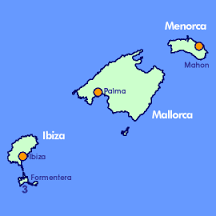Majorca
Chiereghin, Luciano
Luciano Chiereghin is an Italian researcher who has a great interest in the history of the Po Valley, both  ancient and modern. In his 2007 book Atlantide al Microscopio (Atlantis Under the Microscope)[1572] he has the plain of the Valley as the location of Atlantis (=Hyperborea) and specifically the ancient town of Adria. He also proposes that Majorca, Sardinia, Corsica, Sicily, Crete and the Peloponnese constituted the island territories of Atlantis.
ancient and modern. In his 2007 book Atlantide al Microscopio (Atlantis Under the Microscope)[1572] he has the plain of the Valley as the location of Atlantis (=Hyperborea) and specifically the ancient town of Adria. He also proposes that Majorca, Sardinia, Corsica, Sicily, Crete and the Peloponnese constituted the island territories of Atlantis.
However, he is not the only one to link this region with Atlantis, as Morven Robertson published a book[1164] in 2015 with a similar theme. Both authors were drawn to the Po Valley by its size and its proximity to the magnificent mountains of the Alps, which protect the plain from the northern winds.
Diego Marin has favourably reviewed Chiereghin’s book(a).
(a) Atlantide al microscopio – Il sito ufficiale di diego marin (archive.org)*
Balearic Islands
The Balearic Islands in the Western Mediterranean is described by Britannica as consisting of two groups of islands. “The eastern and larger group forms the Balearics proper and includes the principal islands of Majorca (Mallorca) and Minorca (Menorca) and the small island of Cabrera. The western group is known as the Pitiusas and includes the islands of Ibiza (Eivissa) and Formentera.”
The archipelago was not occupied until  around 2200 BC. Although the two larger islands of Majorca and Minorca have many megalithic monuments, principally taulas and talayots, they have not, so far, been part of any serious Atlantis location theory. The only mention that I can find is the unsubstantiated claim by Frank Joseph [104.66] that the early settlers were invaders from Atlantis.
around 2200 BC. Although the two larger islands of Majorca and Minorca have many megalithic monuments, principally taulas and talayots, they have not, so far, been part of any serious Atlantis location theory. The only mention that I can find is the unsubstantiated claim by Frank Joseph [104.66] that the early settlers were invaders from Atlantis.
A February 2023 BBC article noted that “Menorca has one of the highest concentrations of prehistoric sites in the world (a selection of which are being considered for inclusion in Unesco’s World Heritage list in 2023). If the island is granted World Heritage status this year, it will unlock more funding for much-needed research that may help answer some of the mysteries of the taulas. It would also be a boon for cultural tourism, encouraging new visitors to explore this beautiful island with its unique archaeological heritage.” (h)
Steven Sora noted(d) that “From the Bible we know the Tartessians were ruled by kings and mentioned with princes of the isles—very likely islands like Corsica and the Balearics.” I mention this as Tartessos is frequently linked with Atlantis.
The island of Es Vedra off the west coast of Ibiza, the third largest of the Balearics, has had a number of imaginative myths, old and new, associated with it, including that it is supposed to be the birthplace of the goddess Tanit and the limestone on the island is alleged to have been used to build the Egyptian Pyramids. Then, for good measure, Es Vedra is also claimed to be a peak of the mountains of Atlantis!(c)
In 1911, Albert Gruhn proposed that Atlantis may have lain between the Balearics and Sardinia(a), while a century later the American nuclear engineer, Robert J. Tuttle, suggested[1148.301] the Balearics as a possible location when sea levels were lower and the archipelago was more extensive, explaining that “For Atlantis, we must relocate the ‘Pillars of Herakles’ to somewhere between Tunisia (the Roman ‘Africa’), Sicily and the toe of Italy”
In 2014, André Kramer published an illustrated paper(f) on the Mysteria 3000 website highlighting the existence of cart ruts on Mallorca, the principal island of the Balearic group. Kramer also identified cart ruts in Albstadt in Germany(g).
Gernot L. Geise has written a large number of articles about the megalithic monuments on the Balearics for EFODON‘s Synesis magazine(e).
The most recent discovery of a prehistoric stone structure on Menorca was reported in the Spring 2016 edition of Popular Archaeology magazine(b).
(a) https://paperspast.natlib.govt.nz/cgi-bin/paperspast?a=d&d=NOT19110819.2.22.16
(c) https://www.ibiza-spotlight.com/magazine/2013/07/legends-ibiza-es-vedra
(d) https://atlantisrisingmagazine.com/article/in-search-of-tarshish/ (offline May 2019)
In Search of Tarshish – ATLANTIS RISING THE RESEARCH REPORT (Page one only)
(e) https://www.efodon.de/html/publik/sy/sy.html
(f) Cart-Ruts auf Mallorca – Mysteria3000 (archive.org)
(h) https://www.bbc.com/travel/article/20230205-menorcas-mysterious-tables-for-giants *
